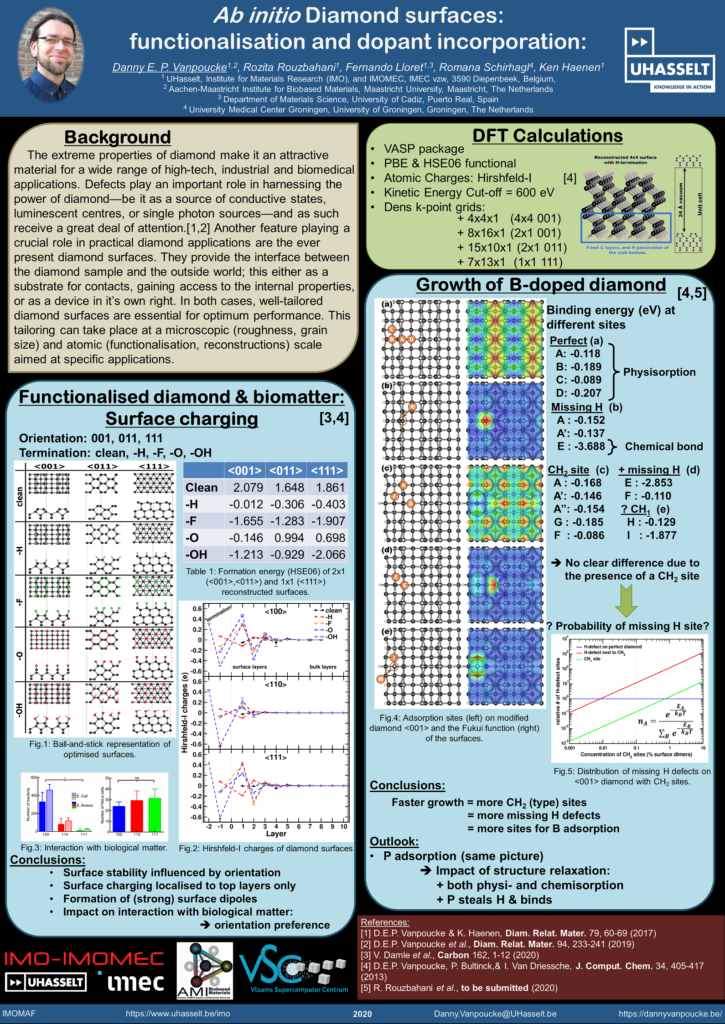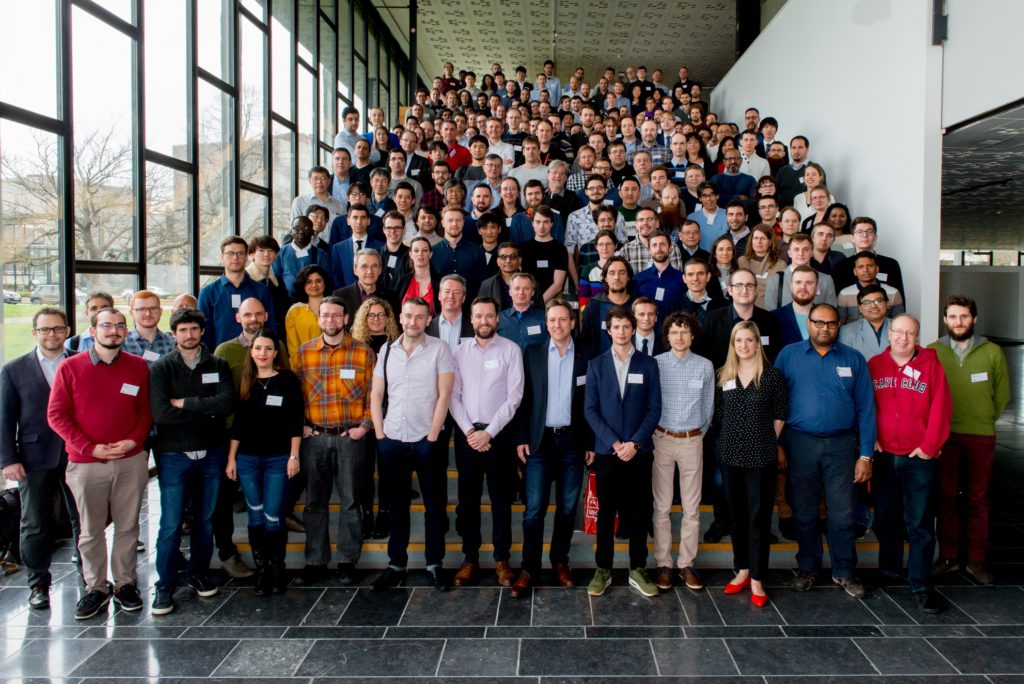Last Wednesday, the 25th edition of the Hasselt Diamond workshop started. The central topic of this celebratory edition was focused on surfaces, perfectly suited to present some of my more recent diamond based work.[1][2] Just as the previous years, the program was packed with interesting talks on anything diamond. Phosphorous doped diamond seemed to be the “new thing” this year, but I could be biased, as I was speaking on phosphorous adsorption myself. Due to a cancellation, I found myself being asked on Monday afternoon to present my work as a talk 😎 , on Wednesday morning 😯 . Because I had been a bit too ambitious in my conference abstract, this talk ended up being nicely complementary to my poster.

Unfortunately, this celebratory edition also fell victim to the COVID-19 crisis. In addition to being the most popular conversation topic—a close second to diamond research—, it also had a very real impact on the conference itself. The COVID-19 crisis resulted in a drop of attendance from 238 people in 2019 to 143 this year. In addition, the quickly changing situation worldwide lead to last minute cancellations due to travel restrictions. On Thursday evening, the conference site went into lock down. Furthermore, that evening, the Belgian federal government also decided that schools and higher education should be closed, as well as pubs and restaurants, until April 3rd. There was also the urgent request for people to work from home as much as possible. (Consider this a good example of acting NOW aimed at saving people.)
Consider this computational scientist in lock down in his home lab until further notice.


